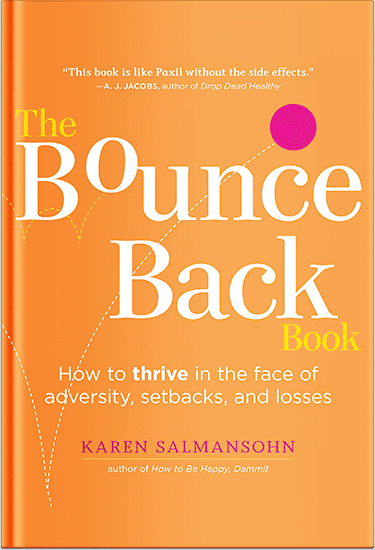 When you think of homes that are disability friendly, what comes to mind? Maybe you imagine a house with wide doorways and no steps leading up to the entrance. Or perhaps you picture a home outfitted with unique amenities like ramps or rails.
When you think of homes that are disability friendly, what comes to mind? Maybe you imagine a house with wide doorways and no steps leading up to the entrance. Or perhaps you picture a home outfitted with unique amenities like ramps or rails.
While these features can make a home more disability friendly, there are many other ways to make your home more accommodating for everyone – regardless of ability.
For those of us that need to use mobility aids like wheelchairs, power wheelchairs, walkers, or canes, it is important to have a home that accommodates our needs.
Thankfully, there are many tips for making your home more disability-friendly.
As you might know, I am a bestselling wellness author with about 2 million books sold globally.
Plus I founded a groundbreaking video course called The Anxiety Cure.
I love sharing tools to help people live their happiest and and healthiest lives.
With this mind, I created this article with ten ways to make your home more disability-friendly.
10 Ways to make your home more disability friendly
There are several ways you can make your home more disability friendly, whether you’re living with a disability yourself or accommodating someone else. Here are ten ideas to get you started.
1. Widen doorways and hallways.
This will allow easier passage through the home, especially if you’re using a wheelchair or walker.
2. Install ramps.
Ramps can be placed at entrances and exits to make getting in and out of the house easier.
3. Lower countertops and shelves.
This will make them more accessible for those using wheelchairs or walkers.
4. Use grab bars in bathrooms and showers.
Grab bars provide stability and support when getting in and out of the shower or using the toilet.
5. Use non-slip flooring.
This can help prevent falls, especially in bathrooms and kitchens where floors can get wet.
6. Keep your home well-lit.
Good lighting can help you see obstacles in your path and avoid accidents.
7. Organize your home to reduce clutter.
Clutter can be a trip hazard, so keeping things tidy and organized is essential.
8. Use adaptive equipment.
Several products on the market can make everyday tasks easier, such as reachers and grabbers, dressing aids, and cooking utensils.
9. Have a backup plan for power outages.
If you rely on electrically-powered equipment, make sure you have a backup plan in case of a power outage.
10. Keep emergency numbers handy.
In case of an accident or other emergency, it’s essential to have emergency numbers readily available.
What are some cost-effective improvements?
Making your home more disability-friendly doesn’t have to be expensive. There are many small and cost-effective changes to your home that you can make that will make a big difference.
1. Changing handles
Doorknobs can be difficult to grip for those with arthritis or limited hand mobility. Swap out traditional doorknobs for lever handles, which are much easier to grip and turn.
2. Adding lower shelving
Lower shelving can make it easier for those in wheelchairs or with limited mobility to reach items. Consider adding a few lower shelves in the kitchen or bathroom or throughout the house if needed.
3. Lighting changes
Adding additional lighting, or swapping lightbulbs for higher wattage bulbs, can make it easier to see obstacles and avoid accidents.
4. Organizing and decluttering:
A cluttered home can be a safety hazard for anyone, especially those with limited mobility.
How can technology help with making a home more disabled-friendly?
There are several ways that technology can help make a home more disability-friendly.
For example, there are now apps that can help with turning on lights, opening doors, and even calling for help in an emergency.
Some products can help with everyday tasks, such as dressing, cooking, and grooming.
It is also essential to know if you rely on electrically-powered equipment, there are now backup systems that can keep things running in case of a power outage.
So if you’re looking for ways to make your home more accommodating, don’t forget to consider the role that technology can play.
Will Medicaid help pay for modifications in my home?
In some cases, Medicaid can help pay for modifications made to a home to accommodate someone with a disability.
However, each state has different rules about what is covered, so it’s essential to check with your local Medicaid office to see if you qualify.
It should be known that Medicaid could help through the Waivers Program. This is in place so that you or someone you know with disabilities can have in-home support.
This would allow you to stay in your home, as opposed to being placed in a long-term care facility.
You may also be able to get help through other government programs, such as the Americans with Disabilities Act or the Housing and Urban Development’s Fair Housing Assistance Program.
Making your home more disability-friendly can seem like a daunting task, but there are many small changes you can make that will make a big difference.
With a little bit of planning and some help from friends and family, you can make your home a more comfortable and safe place for everyone.
Important Information on Home Improvements Grants
There are several home improvement grants available for people with disabilities. These grants can help you make your home more accessible and comfortable.
- The Department of Housing and Urban Development (HUD) provides grants for home modifications for people with disabilities. This includes grants for modifying your home to make it more accessible and comfortable.
- The Department of Veterans Affairs (VA) provides grants for disabled veterans to make modifications to their homes. This includes grants for adding ramps, widening doorways, and other changes.
- The US Social Security Administration (SSA) provides benefits for people with disabilities. This includes a program called the Social Security Disability Insurance (SSDI). The SSDI offers financial assistance to people with disabilities who cannot work.
- The US Department of Agriculture (USDA) provides grants for rural homeowners to improve their homes. This includes grants for adding ramps, widening doorways, and other modifications.
- The US Department of Education (USED) provides grants for schools to make improvements for students with disabilities. This includes grants for adding ramps, widening doorways, and other modifications.
Final thoughts on disability-friendly homes
There are several ways to make your home more disability-friendly. These include grants from the government, as well as other organizations.
Making your home more accessible can make a big difference in your quality of life and make living with a disability easier while aging in place.
Stay Calm Under Pressure
Explore my therapist recommended course: The Anxiety Cure.
P.S. Before you zip off to your next Internet pit stop, check out these 2 game changers below - that could dramatically upscale your life.
1. Check Out My Book On Enjoying A Well-Lived Life: It’s called "Your To Die For Life: How to Maximize Joy and Minimize Regret Before Your Time Runs Out." Think of it as your life’s manual to cranking up the volume on joy, meaning, and connection. Learn more here.
2. Life Review Therapy - What if you could get a clear picture of where you are versus where you want to be, and find out exactly why you’re not there yet? That’s what Life Review Therapy is all about.. If you’re serious about transforming your life, let’s talk. Learn more HERE.
Think happier. Think calmer.
Think about subscribing for free weekly tools here.
No SPAM, ever! Read the Privacy Policy for more information.
One last step!
Please go to your inbox and click the confirmation link we just emailed you so you can start to get your free weekly NotSalmon Happiness Tools! Plus, you’ll immediately receive a chunklette of Karen’s bestselling Bounce Back Book!


 When you think of homes that are disability friendly, what comes to mind? Maybe you imagine a house with wide doorways and no steps leading up to the entrance. Or perhaps you picture a home outfitted with unique amenities like ramps or rails.
When you think of homes that are disability friendly, what comes to mind? Maybe you imagine a house with wide doorways and no steps leading up to the entrance. Or perhaps you picture a home outfitted with unique amenities like ramps or rails. 